A NEW START AT SAIC GALLERIES
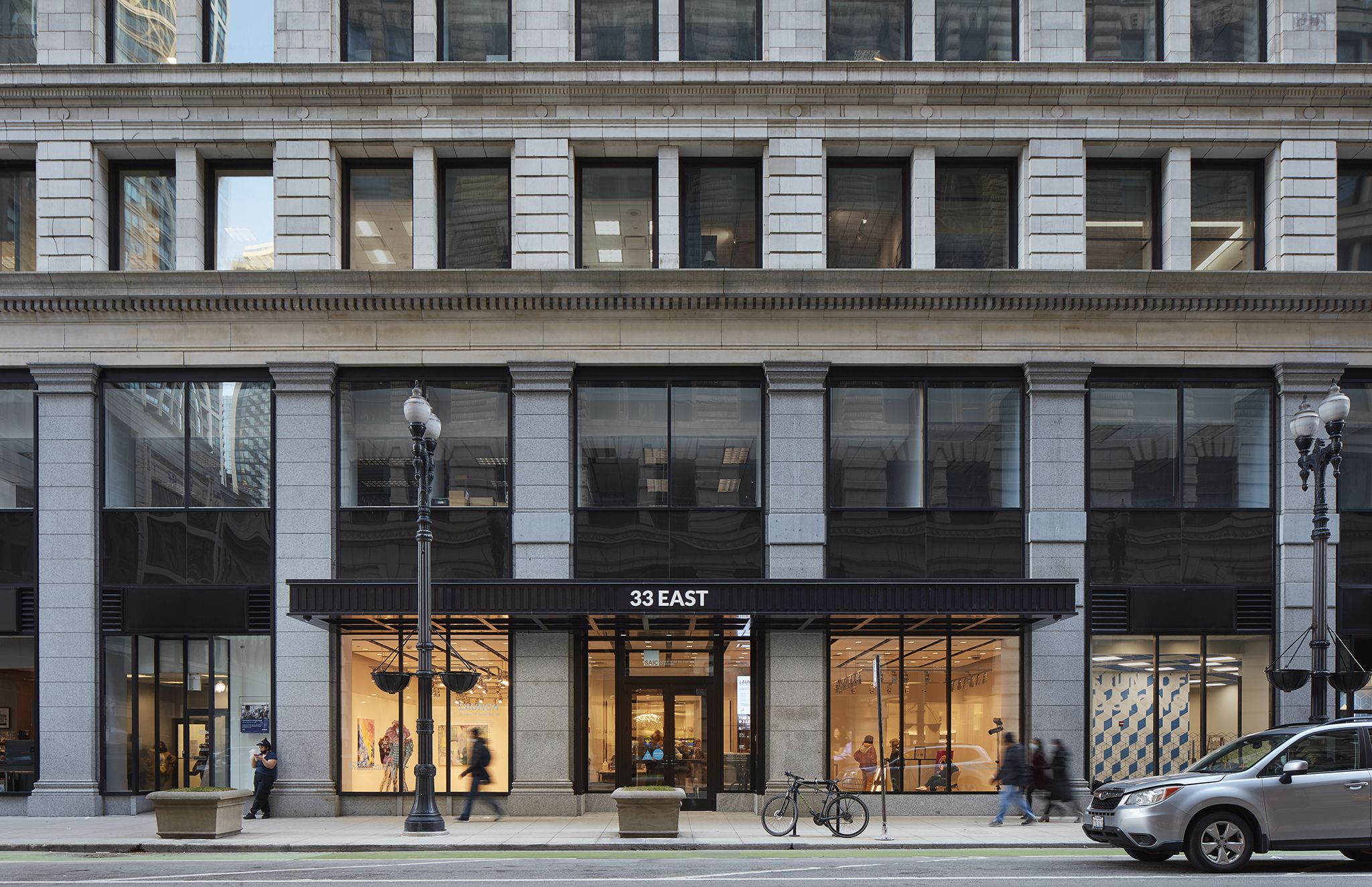
by Joe Giovannetti
Zoom happy hours, virtual game nights, drive-by birthday celebrations—after one year of cultivating our relationships from a safe distance, we’re pining for fresh ways to connect. To feel something new and surprising.
If your search for inspiration brings you to Chicago’s Loop, an unfamiliar sight behind a pair of large, glass windows might catch your eye. A mannequin sporting explosive, avant-garde fashion. The vibrant watercolors of a painting. A soloist performing entrancing movements. Just above, a black awning juts onto the sidewalk bearing the School of the Art Institute of Chicago (SAIC) logo.
That’s SAIC Galleries—the School’s brand new public art gallery in the heart of downtown Chicago. And through art, it’s bringing people together.
Located at 33 East Washington Street, a 1,000 square-foot gallery and an enormous wall projection are only what is apparent from the street; once inside, a cascading atrium staircase reveals two additional floors of gallery space—boasting 26,000 square feet dedicated solely to exhibitions. Combined with 60 graduate student studios, three critique spaces, and a student workshop and lounge, the facility is bursting with potential as an incubator for Chicago’s emerging artists.
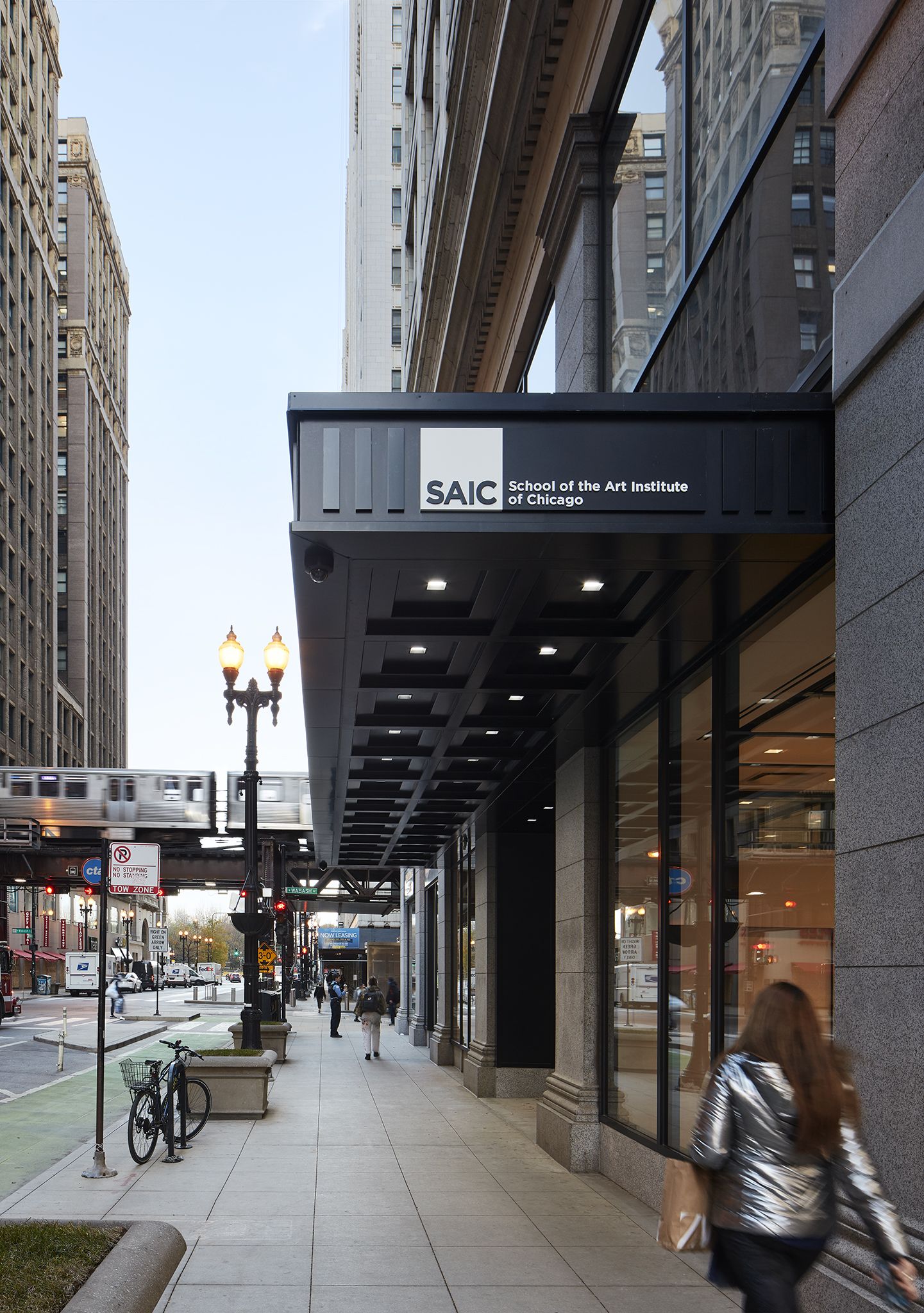
The gallery's awning extends over the Washington Street sidewalk. Photo by Steve Hall and Kendall McCaugherty, Hall and Merrick Photographers
The gallery's awning extends over the Washington Street sidewalk. Photo by Steve Hall and Kendall McCaugherty, Hall and Merrick Photographers
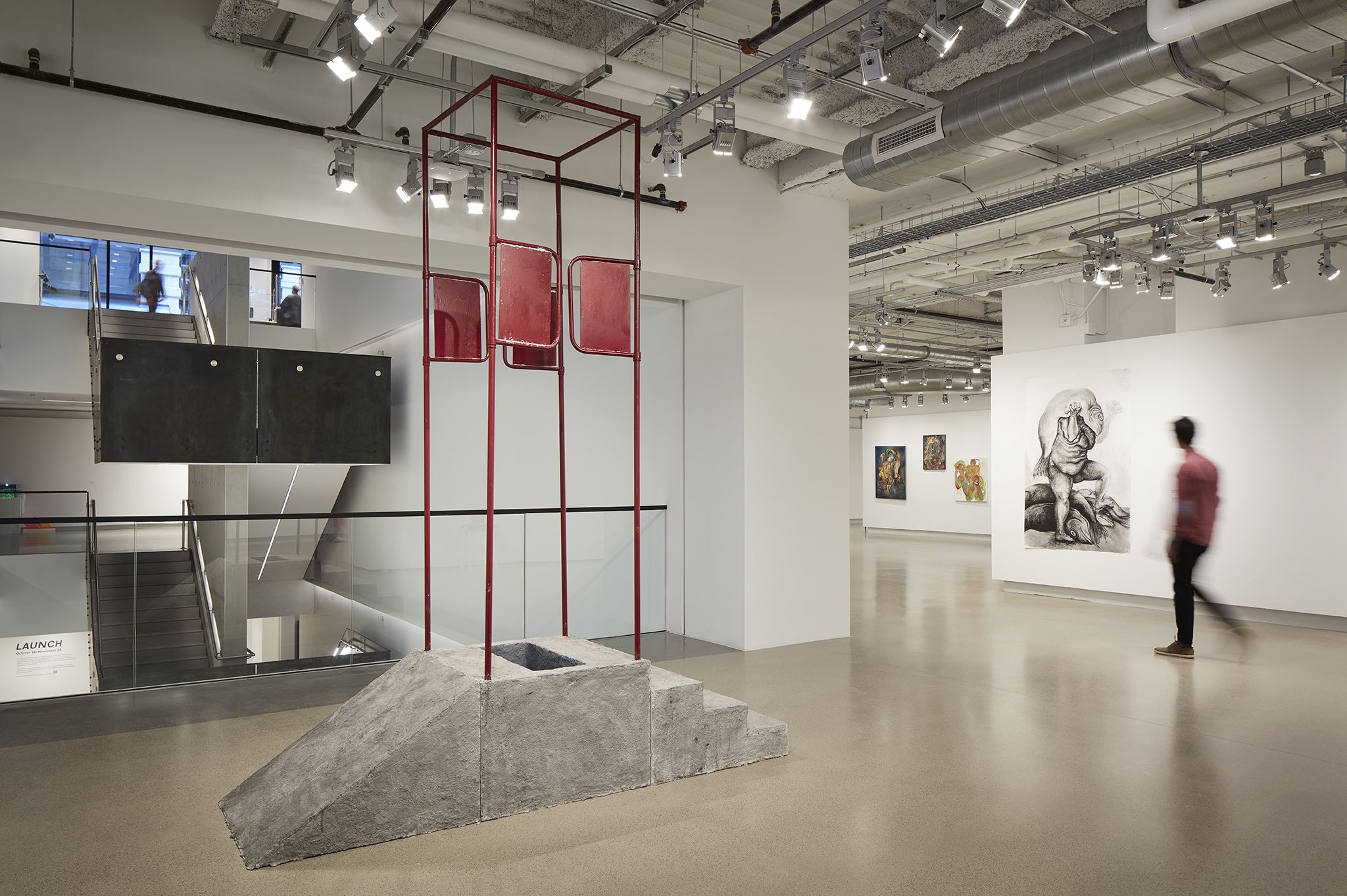
The Spring Undergraduate Exhibition at SAIC Galleries. Foreground: Rong Bao, Threshold, 2020. At right: Barbie Kim, The Market, 2020. Photo by Steve Hall and Kendall McCaugherty, Hall and Merrick Photographers
The Spring Undergraduate Exhibition at SAIC Galleries. Foreground: Rong Bao, Threshold, 2020. At right: Barbie Kim, The Market, 2020. Photo by Steve Hall and Kendall McCaugherty, Hall and Merrick Photographers
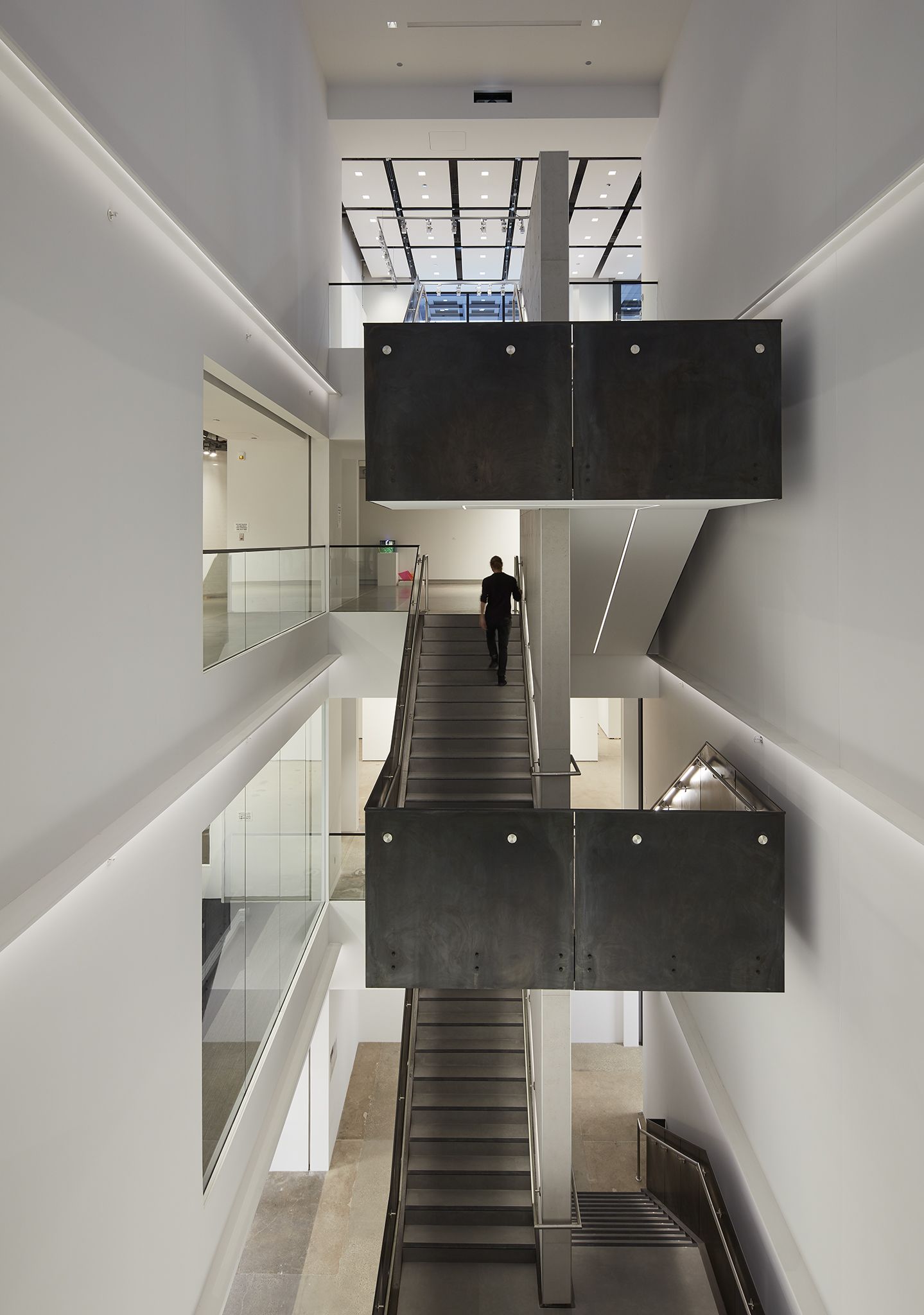
A three-level, open-air staircase gives gallery visitors a peek into the different exhibitions that run simultaneously on each floor. Photo by Steve Hall and Kendall McCaugherty, Hall and Merrick Photographers
A three-level, open-air staircase gives gallery visitors a peek into the different exhibitions that run simultaneously on each floor. Photo by Steve Hall and Kendall McCaugherty, Hall and Merrick Photographers
Take a video tour of the galleries at the bottom of this story.

SAIC Galleries officially opened in October of 2020. The move came after a 12-year residency in the School’s previous flagship gallery, Sullivan Galleries, where its seventh-floor location housed work by SAIC students and faculty, as well as exhibitions featuring national and international artists, mostly outside of the public eye.
“You really needed to be in the know to plan your trip—or understand that it was there,” said SAIC Executive Director of Exhibitions Trevor Martin (MFA 1998). Barbie Kim (BFA 2021), a senior who had worked at Sullivan Galleries since her freshman year, agreed: “We were the hidden gem of SAIC.”
“Exhibitions fulfill a very specific need for an art school. It’s the moment where art is socialized and meets the public—and that is why we’re here. It felt important, regardless of audience size, for students to have that shared experience and make the transition from studio to gallery space.”
Now, it was time to put this gem on full display. Unfortunately, just as the School prepared to open its new gallery to the public, the emergence of COVID-19 and resulting inability to gather in person forced an immediate shift in gears.
Luckily, as Martin fittingly observed, “artists are creative problem solvers.”
Staff, faculty, and students sprung into action by creating digital exhibitions. Using photographs captured in the final days of its run, the Spring Undergraduate Exhibition went fully online. Class of 2020 graduate students were featured in The Future of Our Plans, which drew more than 40,000 unique visitors from around the world.
While the internet proved a useful tool for showing work from a distance, the School faced another dilemma. When the fall semester began, would they be able to exhibit in person?
“Over the summer, we had to ask ourselves, What’s the purpose of doing a physical exhibition in the middle of a pandemic?” said Martin. “Exhibitions fulfill a very specific need for an art school. It’s the moment where art is socialized and meets the public—and that is why we’re here. It felt important, regardless of audience size, for students to have that shared experience and make the transition from studio to gallery space.”
“I think we’re all desperate for the joy that art is right now,” Martin continued. “So many people here are committed to providing the best experience for the students that we can—so we thought, How can we put our collective thoughts together to envision what might be?”
Enter Launch: SAIC’s first in-person exhibition since the campus was forced to close in March and the aptly named opening exhibition of the new SAIC Galleries. Through an open call, Launch gave 66 alums from the Master of Fine Arts, Master of Architecture, and Master of Design classes of 2020 a second chance to exhibit their work in person and the first opportunity to showcase their work in SAIC Galleries.
“I was pleasantly surprised to find out we’d have an opportunity to share our work given the new COVID-19 reality,” said Austin Pope (MFA 2020), a recent alum from the Department of Photography. “The most exciting part was knowing we were part of the inaugural exhibition for this new space.”
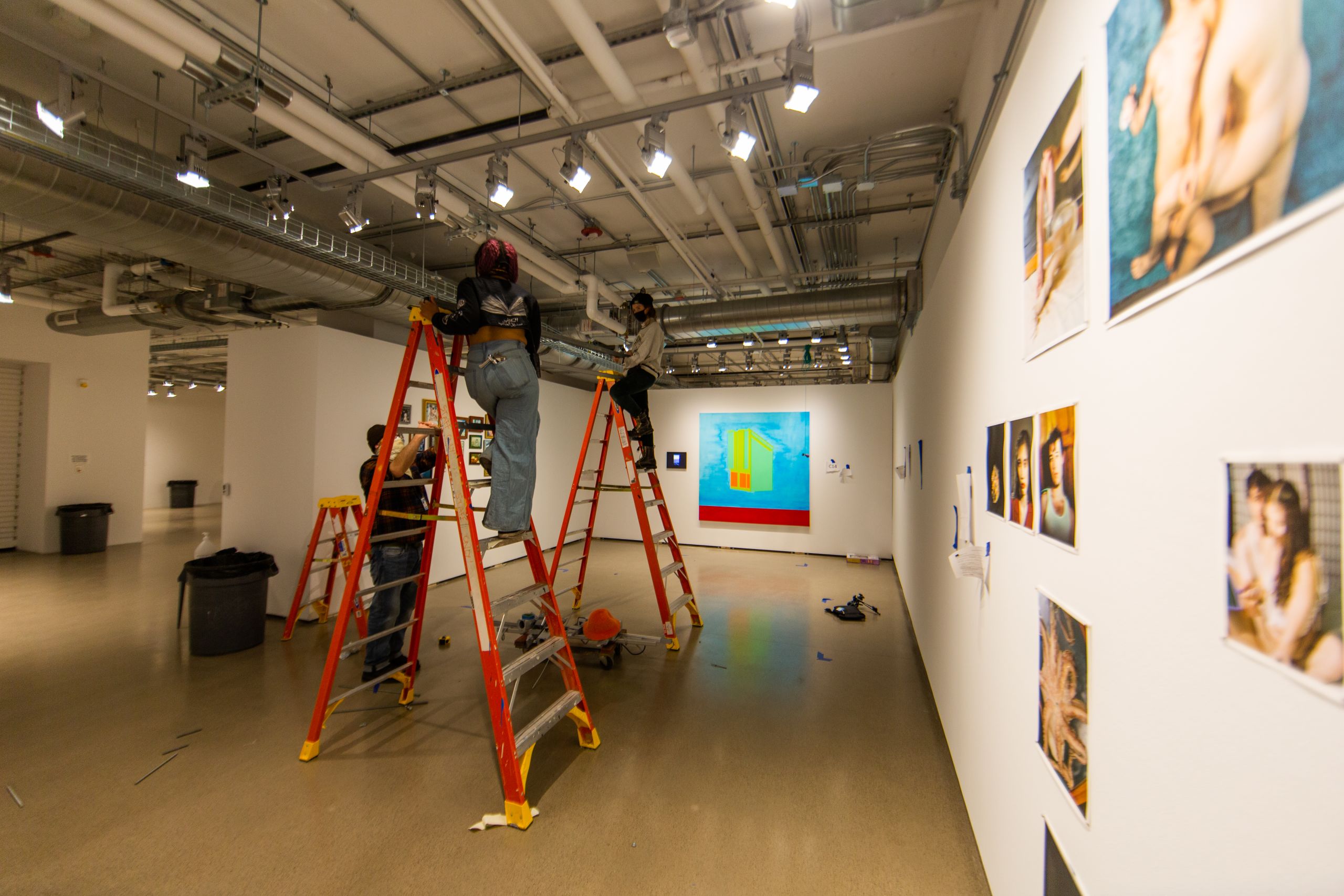
SAIC community members work together to install one of the first SAIC Galleries shows. Photo by Greg Stephen Reigh (BFA 2013)
SAIC community members work together to install one of the first SAIC Galleries shows. Photo by Greg Stephen Reigh (BFA 2013)
The SAIC administration, health and safety experts, and Exhibitions and Exhibition Studies department worked closely to open Launch. To reduce gallery density during installation, local students were given up to two days to mount their artwork (a significant reduction from the typical nine-day installation period). Out-of-state students shipped their pieces with highly detailed installation instructions. Paper maps were replaced with scannable QR codes, and pieces requiring handled objects were reimagined in new forms. Visitors would be required to make timed appointments and follow the campus’s shared responsibilities.
Despite these limitations, the community rose to the challenge, and Launch opened to SAIC students, faculty, and staff on October 19. “Witnessing both students and faculty strive to make the exhibition possible was truly inspiring,” observed Pope. “It showed that regardless of the circumstances, art is a necessary part of our social interaction, awareness, and sense of community.”
The general public also experienced Launch during dedicated days throughout the show’s run. Martin described one particular experience with a patron: “We had a visitor come by the gallery when we first opened the show. They said, ‘I was just so hungry to go see some art. Thanks for doing this. Thanks for being here.’”
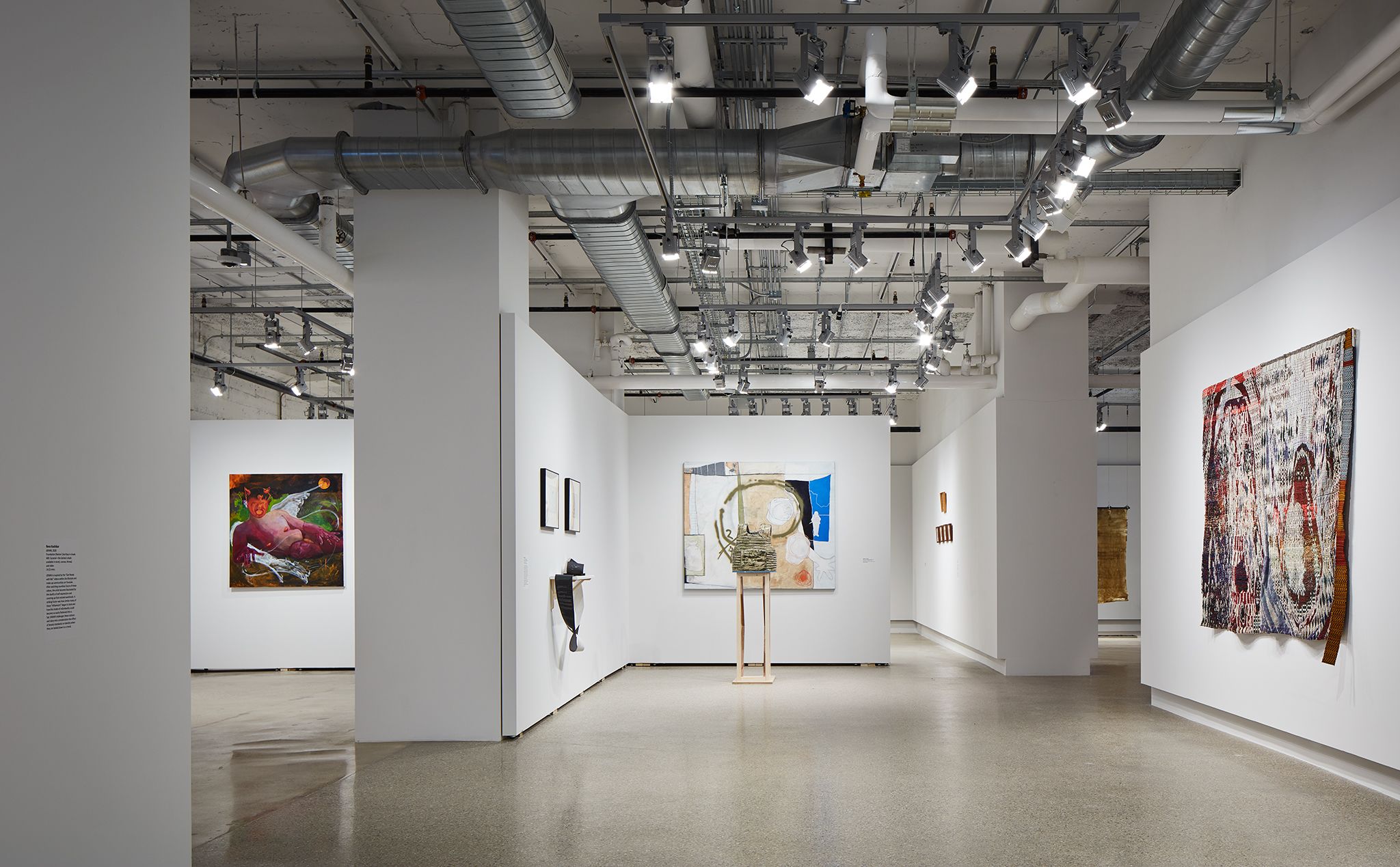
Photo by Steve Hall and Kendall McCaugherty, Hall and Merrick Photographers
Photo by Steve Hall and Kendall McCaugherty, Hall and Merrick Photographers
Over the course of the fall semester, the SAIC Galleries team continued to find new ways to engage with art lovers around the world: the Fall Undergraduate Exhibition showcased the work of more than 70 SAIC students completing undergraduate degrees; the galleries partnered with Visual AIDS for Day With(out) Art 2020, presenting a video program titled TRANSMISSIONS; and the Gene Siskel Film Center streamed the 2020 Film, Video, New Media, Animation, and Sound Festival in a seven-day, online run.
When it came time to produce New Blood, SAIC’s standout student festival of performance, live art, and time-based work, the Exhibitions and Exhibition Studies department faced yet another predicament. For the past eight years, the festival was presented in partnership with Links Hall, where students’ live performances drew tightly packed crowds in the hundreds.
Given the pandemic, the staff and curators developed a new plan. The public-facing, street-level windows of the Sharp Building and SAIC Galleries would become the performance venue. The audience? The passersby of the Chicago Loop.
Jess Smoot (MFA 2021), a theater artist and first-year graduate student in the Department of Performance, embraced the format. Inspired by the parallel isolation of the current crisis and the AIDS epidemic of the 1980s–90s, Smoot aimed to transform their space into a socially distant LGBTQ+ community gathering hub. In their performance until we can party again, i’ll be here, Smoot adorned the SAIC Galleries windows with queer ephemera, created a livestream soundscape, and danced behind the glass with whomever walked by.
“Essentially, I turned the window into a one-person queer club,” Smoot said. “I’d get people walking past who weren’t expecting to see someone dancing in a window. Some smiled. Some stopped and danced with me. These are people that wouldn’t have set foot in the galleries; their intention isn’t to encounter art. At such an outright public space, you’re getting your art out there in a really tangible way.”
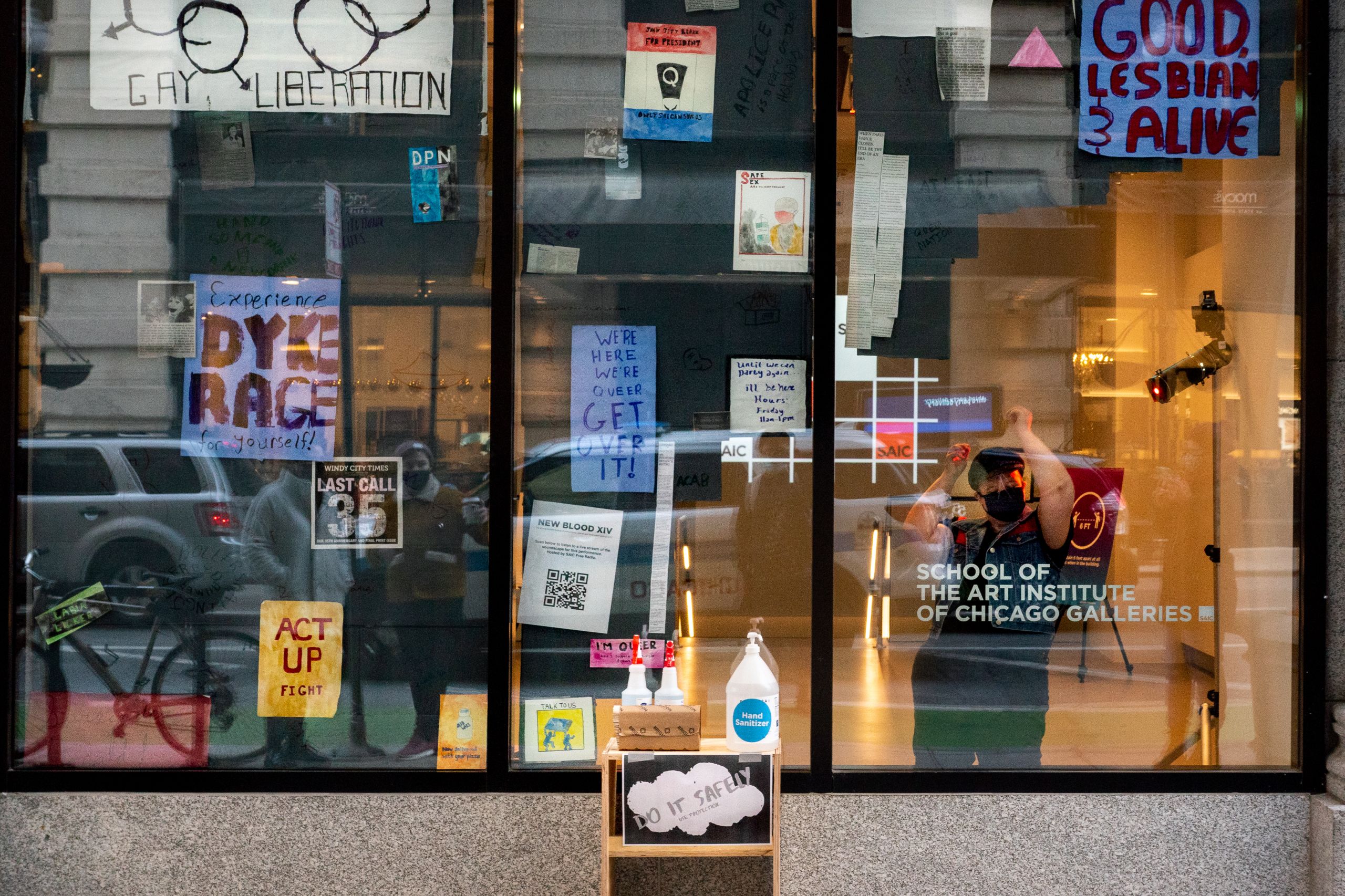
Jess Smoot performs until we can party again, i'll be here in the SAIC Galleries street-level windows. Photo by Ji Yang
Jess Smoot performs until we can party again, i'll be here in the SAIC Galleries street-level windows. Photo by Ji Yang
“The space has the potential to bring about a sense of togetherness. In spite of everything that’s happening around us, we are still afforded the opportunity to create.”
From talking with students and staff, a through line of their experiences became clear: it’s the people that make SAIC Galleries come alive.
“The space has the potential to bring about a sense of togetherness,” elaborated Pope. “In spite of everything that’s happening around us, we are still afforded the opportunity to create. It may not be in conventional methods, but the opportunity is still there.”
At its heart, the galleries are a vehicle for connection; a place for the dynamic, complex, and diverse communities of Chicago to come together.
“When people think about Chicago, I want them to think about SAIC, and I see SAIC Galleries as a symbol of that,” said Kim. “Now we are coming up from the ground and saying, Hey! Here we are!”
In the coming months, student artists, faculty, and staff will continue to experiment with new ways to bring people from around the globe—art lovers, newcomers, and everyone in between—into the world of the School of the Art Institute of Chicago. If SAIC Galleries’s first few months have proved anything, it’s that the possibilities are endless. ■
See more inside SAIC Galleries

